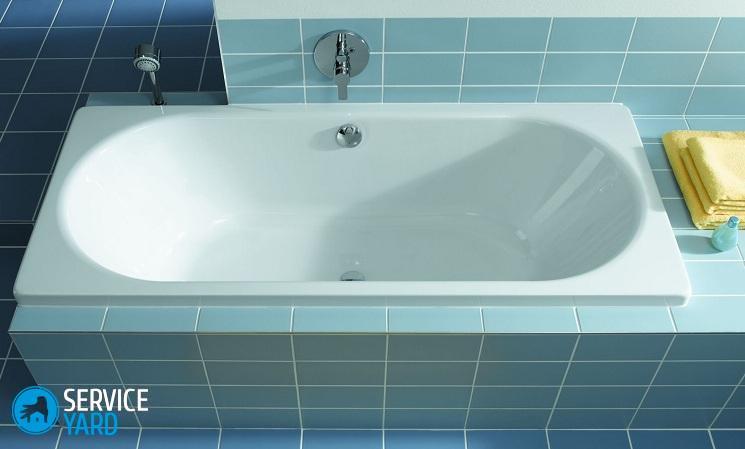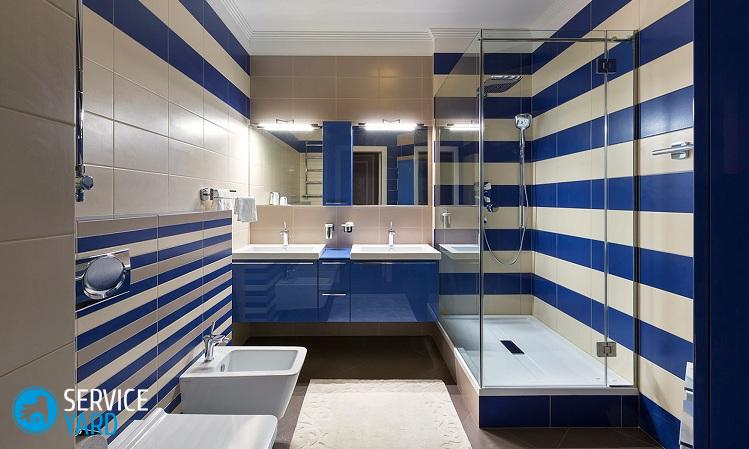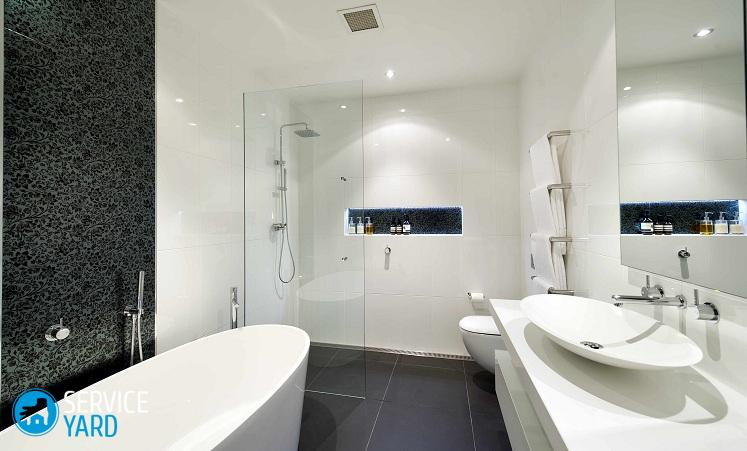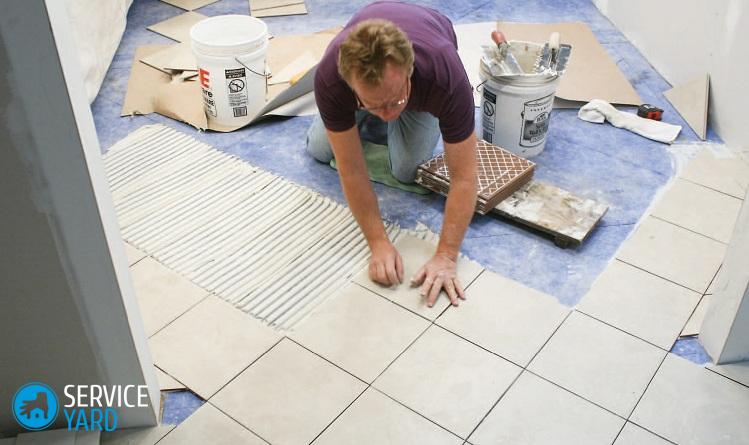How to lay a tile in the bathroom with your own hands?
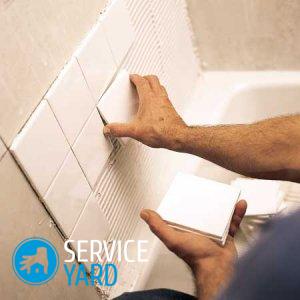
Tile is perhaps the most popular material for bathtubs. Most often they glue the floor and walls with it, but there are options for a very spectacular design, when tiles are laid on the ceiling. However, the interior will look good only when everything is done neatly and efficiently. How to lay a tile in the bathroom with your own hands? We will discuss this now.
to contents ↑Tile - good and different
Before you lay out the tiles in the bathroom with your own hands, you need to take care of the acquisition of quality materials.
pros
The tile has many advantages:
- moisture resistance;
- resistance to temperature extremes;
- good waterproofing properties;
- durability;
- ease of care;
- affordability;
- a large assortment;
- the ability to lay yourself;
- the ability to use several times.
High humidity in the bathroom, as well as temperature changes, is a common and even almost mandatory phenomenon. The tile does not pass water. Seams, of course, to some extent can let it through if you do not use a very high-quality grout, but still get an additional waterproofing layer, and in the bathroom it is extremely useful.
Important! If the tile is properly looked after (and this is quite easy) and not subjected to mechanical stress, it will serve for a remarkably long time. Such a coating perfectly tolerates abrasives and hard washcloths. True, they are almost not needed to be used - almost any dirt is removed with a soft cloth dampened with an ordinary detergent.
Design opportunities
On sale you can find tiles of various types:
- brilliant;
- matte;
- smooth;
- textured.
to contents ↑Important! In addition, the tile comes in different colors and various sizes. You can buy a decorative panel with an already printed pattern.
Choose a tile
Putting the tiles in the bathroom with your own hands will be much easier if you choose the right materials and tools. You need to start with the tile itself. It is better to buy it in an ordinary construction store, and not through the Internet, because you have to check if not every tile, then at least a dozen fragments - in order to make a conclusion about the quality of the entire batch, this will be quite enough.
On the tile should not be;
- chips;
- scratches;
- cracks;
- drips;
- visible color differences;
- vesicles;
- air pockets;
- influxes.
What you choose should match:
- in form;
- to size;
- by color and shade;
- by article number.
Symbols on the packaging
Take the time to look at the markings - you can learn a lot from it. There may be such icons:
- snowflake;
- palm;
- sole;
- flask;
- spark with a number inside;
- gear
- chemical symbols;
- a horizontal rectangle, the top and bottom of which are arrows pointed to each other;
- a rectangle on the legs, on top - the arrow points down;
- inclined board with a shoe stepping on it;
- designations of mass, area and size;
- designations of a place of application.
What does all this mean?
- Snowflake means that the tile is resistant to frost, so it can be used in unheated rooms.
- The image of the palm indicates that the tile from this party can only be glued to the walls, and if you see the foot - the material is intended for facing the floor.
- The flask on the marking indicates that the surface is not sensitive to aggressive chemicals.
- Gear indicates abrasion resistance.
- If you see a chemical symbol (for example, Ag - silver) will tell you that this substance was used in the production, a spark with a number inside indicates the number of burns.
- When you see a rectangle with oncoming arrows, you will learn about the thickness of the tile, and if the rectangle has legs and an arrow hangs on top with a point pointing at the rectangle, this will indicate resistance to mechanical stress.
- An inclined board with a shoe walking along it tells about the coefficient of friction of a wet surface.
Where is which tile applied?
By the icons on the packaging you can find out for which premises the lot is intended. You can see:
- airplane;
- cross;
- bed;
- Olympic rings;
- stylized image of a plant.
Marking designations:
- If a plane is painted, you can clad the airport premises, Olympic rings indicate the use of this type of tile in the design of sports facilities.
- From the image of the bed, you will find out that the tile you like is used for decorating hotel rooms, and the cross indicates that it is suitable for hospitals.
- When you see a stylized picture of a plant, you will find out that this batch is suitable for the repair of industrial premises.
How is it measured?
In building stores there are two types of tiles:
- decorative;
- ordinary.
The first is sold individually, and here you need to make very accurate calculations. In the second case, it is indicated on the package what area can be covered with a given number of tiles.
to contents ↑Important! The amount of purchased material should be about 10% more than the calculated one - in case you unsuccessfully cut a tile or break one of the fragments.
Taking measurements
If your bathroom has already been pasted with ordinary tiles, but you want to put a new one - everything is simple:
- You need to measure one of the tiles.
- Count the total number of tiles.
- Choose material similar in size in the store.
Laying tiles in the bathroom with your own hands, if there was some other coating on the walls, requires a slightly different approach.
- Measure the area of the wall you are about to clad. If it is even, just multiply the length and width of the surface that will be covered with tiles.
- If there are protrusions or niches that are also to be faced, first measure the surface area without a niche, then a niche or protrusion, then the sidewalls.
- See what size tile they offer you in the store. It is best to choose a tile of this size so that you can veneer the selected surface with whole tiles.
- Divide the area of the walls by the area of one tile. The ideal option is if you get an integer, in which case you don’t have to cut the tiles, but this happens very rarely, most likely you will get a number with the remainder.
- Multiply the remainder by 2.
- Add double the remainder to an integer - this will be the minimum number of tiles.
Instruments
Tiles alone for repair will not be enough - additional materials and tools are needed. From the tools you will need:
- roulette;
- level;
- electric drill;
- notched trowel;
- tile cutter;
- rubber mallet;
- sponge or soft cloth.
Additional materials
If you started a bathroom renovation, laying tiles is not at all where to start. You have to:
- remove the old coating;
- align the wall;
- apply waterproofing.
Only after this can you begin to glue. So, along with the tile, it makes sense to buy:
- primer;
- grout;
- material for waterproofing;
- tile adhesive;
- crosses for seams;
- wooden or metal slats.
Remove the coating
The speed of this process depends on the conditions:
- You are going to use the existing tile in whole or in part;
- You want to replace several fragments;
- You completely want to replace the tile with a new one.
In any case, you will need:
- soft sponge:
- chisel;
- hammer.
Important! The first option is not always possible - if the adhesive was spread over the entire surface and there are no voids under the tile, the tiles are unlikely to be removed without damage.
If there are voids, then proceed as follows.
- Moisten the seams thoroughly with water.
- Wait until the grout has softened.
- Remove grout with a spatula.
- Insert the chisel between the topmost tile and the one below it.
- Lightly tapping the chisel with a hammer, insert it under the tile until it comes off.
- Remove all tiles in the same way - the process is very laborious, but relatively clean, and this is the only way to keep the tile intact.
If you are not going to keep an old covering
In this case, everything will be simpler, although dirtier:
- Before starting work, close all plumbing, otherwise it will be quite difficult to get rid of dust later.
- Wet and remove grout.
- Put on a respirator.
- Drill a few holes with a puncher where there is even the slightest emptiness.
- Remove the tile in any way possible - maybe even with the same punch by inserting a drill between the tile and the wall.
Leveling the wall
The surface under the tile should be almost perfectly flat. The fact is that the tile itself is stiff and does not bend, so the slightest deviation will lead to the fact that either the tile will lie crookedly, or some tiles will quickly fall off. The slope should not exceed 0.5 cm. It is necessary to get rid of it with putty, as, however, from all kinds of cracks.
to contents ↑Floor preparation
Before facing the floor, it will be necessary to make a screed, but first, determine its height. By standards, the floor in the bathroom is lower than in all other rooms by 0.3-0.5 cm. This is done so that if there is a leak in the bathroom, water does not get into the corridor and rooms. This must be taken into account when pouring the screed.
Waterproofing
Waterproofing the floor is especially important for those who live on the second floor and above. Suitable for this:
- bitumen and roofing material;
- polymer bulk composition.
How to act:
- Floor slabs clean and ground, as well as a 20 cm strip on all walls.
- After this, apply bitumen mastic. Ruberoid should also be applied, covering the lower parts of the walls.
Important! A very good option is modern cement-based bulk compounds with various waterproof polymers. They are applied in a very thin layer to the floor and parts of the walls - and they give excellent waterproofing.
But you should not do waterproofing with polyethylene - in a couple of years it will collapse, and the water from your bathroom will systematically flow to the neighbors.
Primer
Before facing the walls and floor, be sure to prime. This improves the fit of the tile, and in addition, reduces the consumption of glue.
Features of selection and application:
- It is best to buy ready-made soil, since the assortment in the stores is quite large.
- Apply it with a wide paint brush
- The soil needs to be rubbed, slightly pressing with a brush to the surface.
- If white foam begins to protrude from the concrete floor or wall, there is enough soil.
to contents ↑Important! It is best to prime the walls and floor in the evening, then until the morning the product will absorb and dry. If you apply soil repeatedly, it is not necessary to wait for full drying.
We lay the tiles
Installation of tiles in the bathroom begins with an examination of the back of the tile. Almost all manufacturers make a special mark there, which indicates in which direction the adhesive should be applied - along or across.
Important! This is especially important if the room is spacious and the walls in it are long. An improperly selected direction can cause the seams to sprawl.
When facing the floor, adhesive strips are applied both to the surface and to the tile - perpendicular to each other. When decorating walls, only the wall is covered with glue.
Do the markup
There are only two answers to the question of how best to put tiles in the bathroom. The tile should lie flat and hold firmly.You have already done something for durability - carefully calculated everything, leveled the wall and floor, laid the ground. And how to stick the tile evenly?
- Decide where you will start.
- On the wall, draw a line parallel to the floor line.
- Draw the same lines along all the walls.
Important! From what angle to start - you decide, it depends on the circumstances. But most often, laying tiles on the floor begins from the wall closest to the door, and if it comes to walls, then from the one near which the bathtub stands, and, from its farthest corner.
Apply glue:
- It is best to buy a ready-made adhesive and dilute it strictly according to the instructions.
- Apply it to the surface with a notched trowel.
- Spread the adhesive flat on the surface.
- Jagged - remove excess.
Important! Glue strips should be applied only in one direction.
Why do we need crosses?
In order for the tile to lie flat, finishers use plastic crosses. They are stitched. Crosses can be bought in the same place as tiles, but there are a few things to consider.
Note:
- by thickness;
- on the flexibility of plastic.
Important! Thin crosses are used when laying decorative tiles. Their thickness is 1 mm, they are suitable for seamless styling. For ordinary tiles, which are often faced with bathrooms, fittings with a thickness of 5 mm are suitable. The main thing is that they bend, but do not break. Crosses are placed where vertical and horizontal seams intersect.
In what order to glue?
- If you finish the bathroom completely, it is better to start from the floor.
- In some cases, it is allowed to do the wall cladding first, and only then the floor, but it will be necessary to leave a gap of 0.5 cm from the bottom.
- The wall can, in principle, be faced both from above and from below. If all the tiles are intact - it is better to glue from the floor, if some part has to be trimmed - then start from above so that the trimmed fragments are less noticeable.
- The wall that adjoins the bathroom begins to be faced from the edge of the font.
The tile is pressed to the surface, but not particularly tight, so as not to crack:
- Lay the first row along the drawn line (it is drawn according to the level).
- Put crosses in the right places.
- Check the row level.
- Lay the next row.
In some cases (for example, when facing a narrow wall), tiles can also be laid vertically.
Important! If the tile needs to be cut, this is done using a tile cutter or grinder.
Seams
The tile is laid, but the seams do not look very nice? Nothing wrong. Grief will help grout with sand, and maybe also with latex. The coating will be beautiful, elastic and will last for many years.
Important! If you add latex, the mixture is not diluted with water.
How to grout?
- Cook a small amount of grout.
- Apply it with a thin brush on the tile.
- Spread a rubber trowel over the entire surface.
- Clean the tile - just use a soft sponge moistened with water to wipe all the fragments.
Important! Do not wash the tile parallel to the seams - you can remove the grout.
The final stage
The tiled floor does not require any treatment. But this can not be said about the walls, especially those that are adjacent to the bath. The joints between the bathroom and the wall must be treated with sealant, but this can only be done a couple of weeks after the room is lined.
to contents ↑Stock footage
From this article, you learned all the necessary information on how to lay a tile in the bathroom with your own hands. Follow these tips and rules, and then the result will be really high-quality, and you will not have to be puzzled by the change of decoration for a long time to come.
- How to choose a vacuum cleaner taking into account the characteristics of the house and coatings?
- What to look for when choosing a water delivery
- How to quickly create comfort at home - tips for housewives
- How to choose the perfect TV - useful tips
- What to look for when choosing blinds
- What should be running shoes?
- What useful things can you buy in a hardware store
- Iphone 11 pro max review
- Than iPhone is better than Android smartphones



